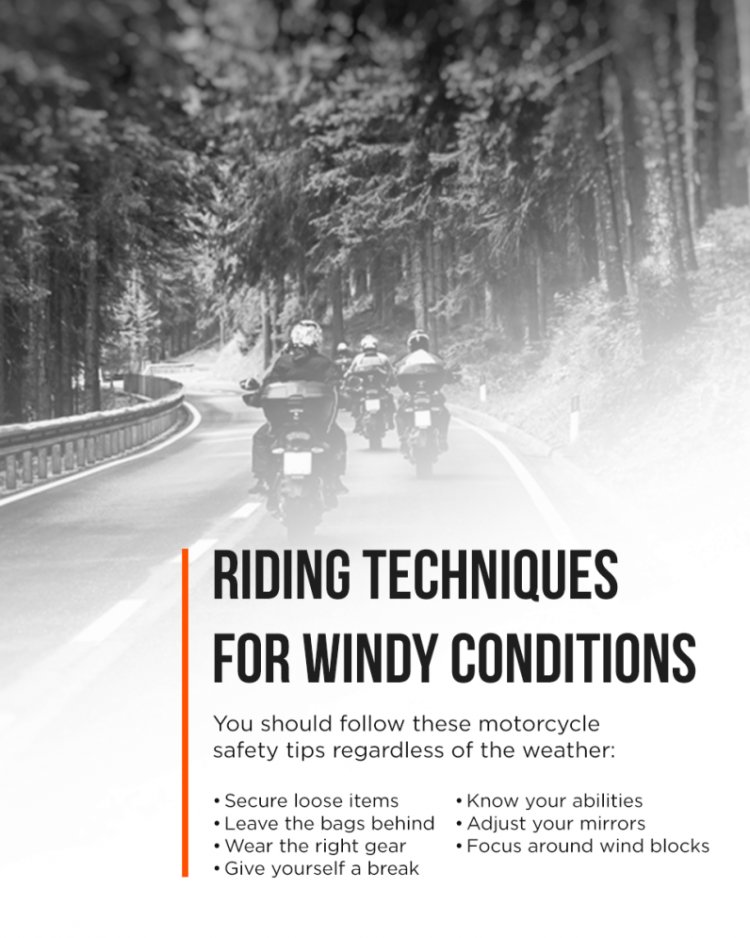May 4 Motorcycle Awareness Month

RIDING IN THE WIND
By: Tammy-TX
We all like being in the wind. You know, riding on our bikes, knees in the breeze, braids blowing at our backs. But what about riding in windy conditions? Sometimes the wind can become a problem when we are trying to get our ride on, especially the stronger wind gusts. These can change at a moment's notice but it’s always a good idea to check the weather conditions before riding.
There are three different types of wind you can experience. The first one is the HEADWIND. It blows in from the front. It can really feel like it’s holding you back so make sure to maintain your speed. Also, it helps if you keep your arms and legs close to your body. If the wind catches an arm or leg it could cause you to become off balance. It’s also good to ride low and duck down behind the windshield as much as you can.
Opposite of the headwind is the TAILWIND. This is the easiest wind to ride in. It pushes you from behind, which can increase your speed, so be sure to give yourself a little more stopping distance. It can also help with gas mileage.
Finally, the most difficult wind to ride in is the CROSSWIND. This wind can come from either the left or the right side. The danger of crosswind is being pushed to the side. If you use your bike to lean slightly in the direction the wind is coming from it can help to counteract how it’s pushing you. Again, do this carefully so as not to lose your balance. You can shift your weight a bit to the side the wind is coming from to help minimize the effects, as well as turning your knee toward the direction of the wind. This will create a sort of sail and will not push your bike around as much.
There are many other precautions you should follow in windy conditions. Anything that is loose on you or your motorcycle can catch the wind and cause drag. Make sure your clothing is secure, especially your eyewear, or consider wearing a full face helmet. Any helmet needs to fit snugly to avoid catching the wind. Also wear appropriate clothing to combat wind chill. Saddle bags and backpacks, which are helpful, can create more surface area for the wind, as well as having a solid wheel vs a wheel with spokes. Keep this in mind if you get caught in windy conditions. Also, your mirrors may need to be adjusted as the wind can move them. You should also know your abilities as far as riding in windy conditions. If you are new to riding or do not have much experience riding in extreme conditions make sure you follow the safety guidelines to help you or consider taking a safety course. If you know the weather will be bad, consider staying home. Lastly, give yourself a break. Riding in windy conditions for long periods of time can cause fatigue much quicker than normal conditions. Stay hydrated and take breaks more often to rest your mind and your body as you try to navigate the many types of wind we can face as we ride.


















